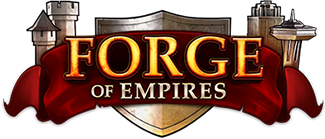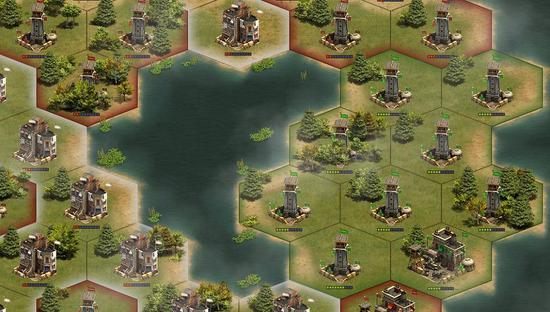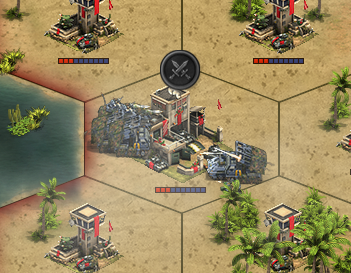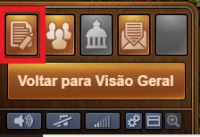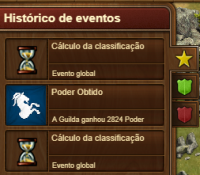Incursões Quânticas: mudanças entre as edições
| Linha 62: | Linha 62: | ||
== Sectors == | == Sectors == | ||
== Guild Levels == | == Guild Levels == | ||
Leveling up your guild will improve its ranking and give bonuses to all its members. Some bonuses will help your guild in the GvG maps, and there are also player bonuses to be gained. | |||
You can view information about your guild’s level, and requirements for all levels, in the guild level window, which is accessible from your guild menu icon. | |||
To see rewards and requirements, you can scroll through the levels using the arrows at the bottom of the guild level window. | |||
===How to level up your guild=== | |||
In order to level up your guild you need to gather power. You gain power by acquiring and holding onto territory. Every sector you control gives power and, at the end of each day, your guild's power points are calculated and added to your guild's total, which contribute towards leveling up your guild. | |||
'''Guild bonuses''' - As you increase your guild's level, the following bonuses for your guild will also increase: | |||
'''Prestige bonus''' - Adds prestige to the guild’s daily prestige ranking | |||
'''Support pool bonus''' - Adds to the guild’s support pool (attack/defense bonus in GvG) | |||
'''Player bonuses''' - Some levels will also provide a player bonus. | |||
'''Recruitment boost''' - Reduces the time needed to recruit units (new times are shown in the recruitment screen), and healing times for units. | |||
'''Research boost''' - Gives additional Forge Points each day in your town hall. | |||
'''Construction rebate''' - Reduces coin and supply cost of all buildings by a percentage (the original cost is shown in the research tree, and the reduced cost is displayed in the building menu). | |||
===Guild rankings=== | |||
Two GvG rankings exist: guild ranking, and map ranking. The guild ranking is global and determined by the amount of prestige points a guild has, which your guild can gain from the level bonuses obtained while leveling up your guild. Provinces also have their own map ranking, which is ordered by guilds' power gained in that province map. Getting to the top of the map ranking will not only increase your guild's fame and notoriety, but it also provides its own benefits. | |||
Every day after the new map rankings are calculated, a power bonus is given to the top 3 guilds. The bonus is as follows: | |||
Top guild - 15% | |||
2nd place - 10% | |||
3rd place - 5% | |||
== Guild Rights & Treasury == | == Guild Rights & Treasury == | ||
== GvG Terms == | == GvG Terms == | ||
Edição das 07h39min de 15 de julho de 2016
Join the war!
Your guild is fighting against others for survival and power. Your goal is to expand your guild's territory and hold on to it, to level up your guild and gain bonuses and glory for all its members.
Each day in GvG your guild must conquer new sectors and defend the sectors it already has under its control. At the end of every day (when the countdown timer ends), guilds' experience is calculated according to the territory they own, and this experience contributes to the guild's level. Level up your guild to gain better rewards!
To get involved in the action, you need to be part of a guild. No matter your guild's size, if you are in Iron age or above, you can still participate. GvG battle gives battle points, too, so you don't need to make a choice between towers or GvG. GvG is currently not available on mobile devices. To access GvG, click the bottom right menu icon:
Guild Continent Map
All action takes place via the GvG continent map, which is a special map designed for inter-guild battles and warfare. The map is split up into provinces, which you can see are separated by rivers and mountain borders. All but one of the provinces represent an era - the bottom-most one is a special “All Ages” province.
The GvG continent map allows you to see a quick overview of your guild's influence in different provinces and also serves as the entry point into those provinces, where your guild will do battle. In the image below, you can see your own guild's area of influence highlighted in green, with enemy territory shown in red. Orange areas indicate territory which is owned by NPCs, in which player guilds have yet to expand.
Your guild can fight in a single province, or all of them... the choice is yours! However, when fighting in one of the era-specific provinces, you can only do battle using units and goods from the same age as the province you are fighting in... so, for example, in the Iron Age map, you can only use units and goods from the Iron Age.
All-Ages province
At the bottom of the map there is a smaller, special “All Ages” province. In this province you can use units from any era in your battles.
Provinces
The battles are fought in the province map. With the help from your guild mates you lay seige to a sector, and then attack it.
Sectors
The province map consists of sectors, which are represented by hexes. It is your guild's job to conquer these sectors - and defend them from invasion - in order to expand your territory. There are two stages to conquering a sector: first you lay seige and then you must attack!
Sectors are coloured according to who owns them:
- Red - Enemy guild
- Green - Your guild.
- White - Neutral (NPCs).
Landing zone
When you open the Guild province map for an era, you will notice that some of the map is dark, which indicates unexplored, unclaimed territory. The active area is where you can land your first army and establish your guild's headquarter.
Which sector to attack?
When you initially enter a province map, you are able to place a siege army in any of the sectors in the landing zone (white area), or on a river sector next to or in another guild's area. The rest of the hexes still belong to the NPCs but can only be attacked if you control an adjacent hex.
Sector status
You can see in the map above if a sector is under siege, as it has an icon with crossed swords above it. A shield icon above a sector means that the sector is protected, as it was recently conquered and cannot currently be attacked. Protected sectors also do not count for attacking and placing siege armies. This means that if you only have one, protected sector next to an enemy sector you want to attack, you will need to wait until the protection is lifted from your sector before you are able to deploy your siege army there.
Event log
The event log records actions made by your own guild members and enemy guilds. You can access it from the province map by clicking the event log button in the menu at the bottom left of the screen.
Three different tabs are available in the log:
- Important events
- Your guild actions
- Enemy guild actions
Clicking on a tab in the event log will show a list of recent events and where the event took place. Clicking the log entry will center the map on that area.
Sectors
Guild Levels
Leveling up your guild will improve its ranking and give bonuses to all its members. Some bonuses will help your guild in the GvG maps, and there are also player bonuses to be gained. You can view information about your guild’s level, and requirements for all levels, in the guild level window, which is accessible from your guild menu icon.
To see rewards and requirements, you can scroll through the levels using the arrows at the bottom of the guild level window.
How to level up your guild
In order to level up your guild you need to gather power. You gain power by acquiring and holding onto territory. Every sector you control gives power and, at the end of each day, your guild's power points are calculated and added to your guild's total, which contribute towards leveling up your guild.
Guild bonuses - As you increase your guild's level, the following bonuses for your guild will also increase:
Prestige bonus - Adds prestige to the guild’s daily prestige ranking
Support pool bonus - Adds to the guild’s support pool (attack/defense bonus in GvG)
Player bonuses - Some levels will also provide a player bonus.
Recruitment boost - Reduces the time needed to recruit units (new times are shown in the recruitment screen), and healing times for units.
Research boost - Gives additional Forge Points each day in your town hall.
Construction rebate - Reduces coin and supply cost of all buildings by a percentage (the original cost is shown in the research tree, and the reduced cost is displayed in the building menu).
Guild rankings
Two GvG rankings exist: guild ranking, and map ranking. The guild ranking is global and determined by the amount of prestige points a guild has, which your guild can gain from the level bonuses obtained while leveling up your guild. Provinces also have their own map ranking, which is ordered by guilds' power gained in that province map. Getting to the top of the map ranking will not only increase your guild's fame and notoriety, but it also provides its own benefits.
Every day after the new map rankings are calculated, a power bonus is given to the top 3 guilds. The bonus is as follows: Top guild - 15% 2nd place - 10% 3rd place - 5%
Guild Rights & Treasury
GvG Terms
Here is a list of GvG-related terms that might be useful to know:
Attack protection - After conquering a sector, it cannot be attacked until the next daily calculation. Also, unless it is a HQ, this sector does not count for placing siege armies and attacking until the next daily calculation.
Average power - The average power of a sector in the province.
Besieged, under siege - A sector that holds a siege army. Besieged sectors do not produce power, and most actions are blocked (like placing a defending army, relocate HQ or grant freedom).
Construction Rebate - According to the level of the guild, all guild members get a discount on the coins and supply costs of their buildings.
Coordinates - A unique identifier for every sector on the province map.
Daily Calculation - At the end of every day, during the daily calculation, power is paid out, and attack protection is lifted.
Defending Army - A sector can hold up to 8 defending armies. If the sector gets attacked, each of these armies has to be defeated 10 times.
Grant Freedom - When a guild “grants freedom” to one of their sectors, it and all defending armies in it will become controlled by an NPC again. The guild will gain a few goods for doing so.
Guild Continent Map - The map in which the provinces are located. Entering GvG will lead you there.
Guild Level - The accumulated power of the maps will contribute to the guild level. Whenever enough points are gathered, the guild levels up and unlocks bonuses for their members.
Guild Ranking - A ranking that displays all guilds sorted by their prestige.
Guild Treasury - The guild treasury holds goods that are contributed by the players and certain events/actions. The treasury is used to pay goods for unlocking slots or placing siege armies.
Guild versus Guild - The official name of the feature is “Guild versus Guild”.
Guild’s area - The sectors controlled by a guild in a province.
GvG / GVG - Abbreviation for “Guild versus Guild”.
Headquarter - The first sector a guild conquers on a map will hold the headquarter. The headquarter can be moved to other sectors. It is important for the distribution of the support bonuses. Also, from a headquarter siege armies can always be placed (there is no 24-hour-protection).
HQ - Abbreviation for headquarter.
Landing Zone - A defined area of sectors in every province in which new guilds entering the map can start and place their initial siege army.
Map Ranking - Every province has a map ranking that displays the guilds sorted according to their daily power.
NPC - “Non-playing character” – if a sector is not controlled by a guild, it is controlled by a NPC instead.
Owner - Either the guild or the NPCs name of whoever owns that sector.
Power - A sector produces power during the daily calculation for the guild that owns the sector.
Prestige - Prestige is calculated from the level of a guild and the daily power. It is used for the global guild ranking.
Prestige Bonus - According to the level of the guild, every day the guild will get a certain amount of prestige.
Province - The guild continent map holds the provinces in which the guilds fight. There is one province for each age, meaning only units and goods from that age are used.
Province’s age - The age of a province; according to our normal ages in the game. In a province, only goods and units from the province’s age can be used.
Recruitment Boost - According to the level of the guild, the recruitment and healing times of units are reduced for all guild members.
Relocate Headquarter - A guild can relocate its headquarter; effectively, the headquarter gets put on to another sector of their territory, as long as neither of the two sectors is under siege.
Research Boost - According to the level of the guild, all guild members receive - Every province holds a large number of sectors. Guilds battle for control of these sectors. A sector provides power.
Siege Army - One member of a guild has to place a siege army on an enemy sector first. Placing a siege army requires goods. Only after placing the siege army the defending armies in that sector can be attacked by members of the guild. Note that the siege army itself does not attack, but it can be attacked and defeated.
Support Bonus - All defending armies in a guild’s sector or a siege army can get a buff. That buff is called “support bonus”. It is calculated from the support pool, the support factor and the distance to the headquarter.
Support Factor - A unique factor for every province; support pool / support factor = total support bonus of that province
Support Pool - All guild members contribute with certain buildings to the guild’s support pool. The support pool and the support factor of a province define the total support bonus for the guild in that province.
Support Pool Bonus - According to the level of the guild, the guild’s support pool is increased.
Unlock - Opening up another slot for a defending army (up to 8 in total). This action requires goods.
Unlocked Slot - A slot that was unlocked and can take a defending army now.
